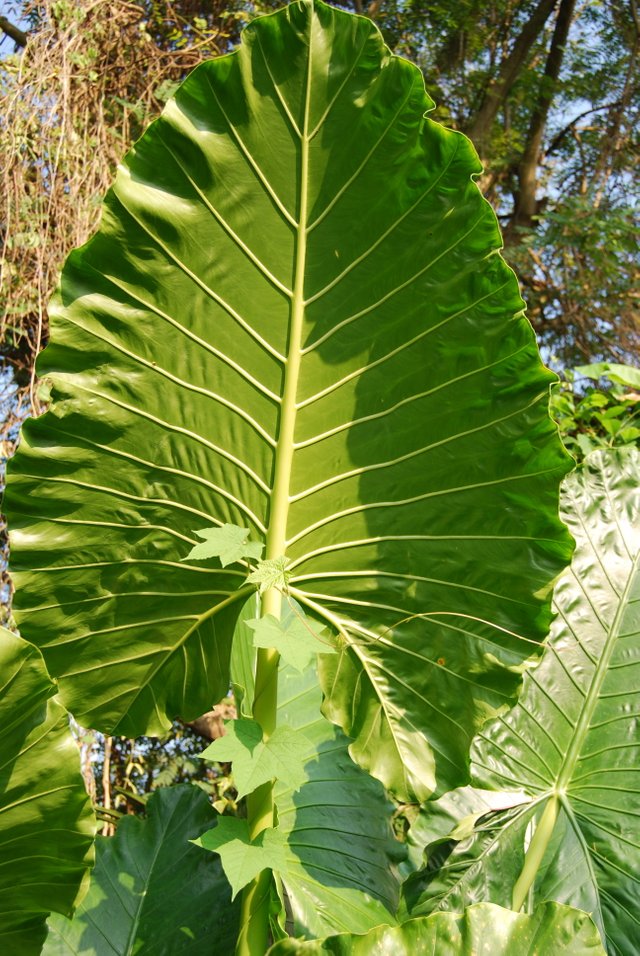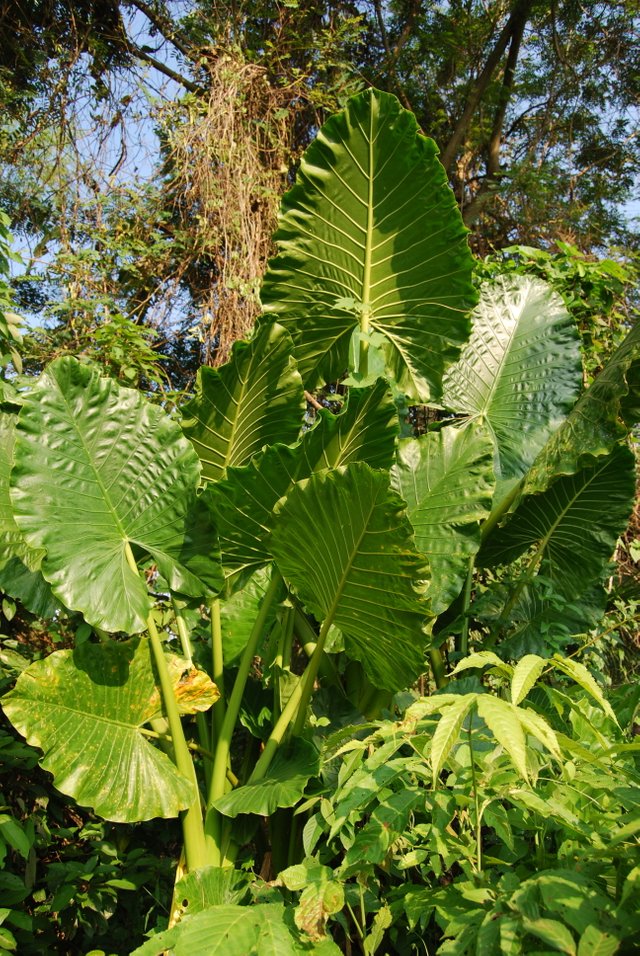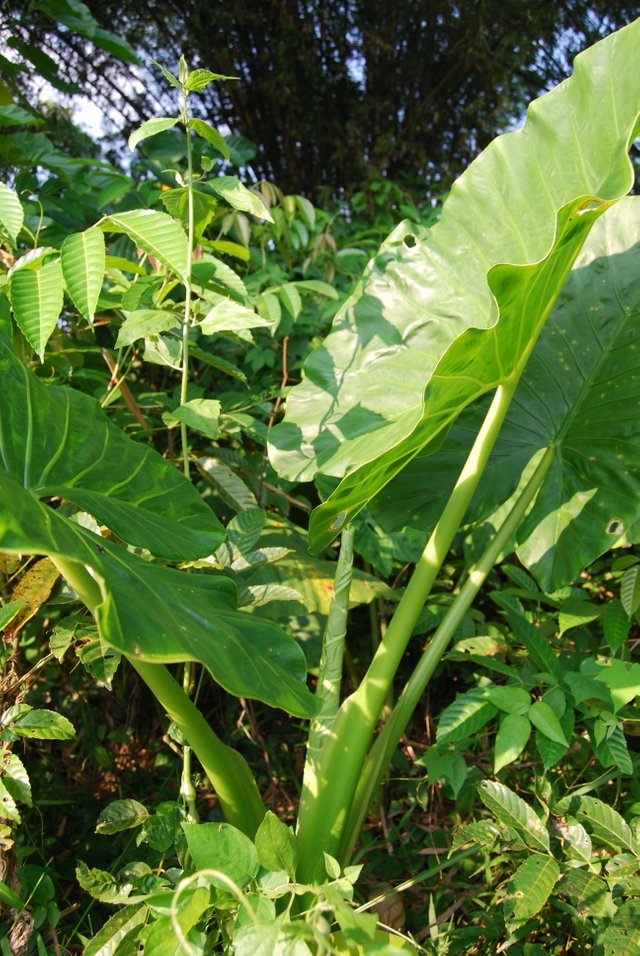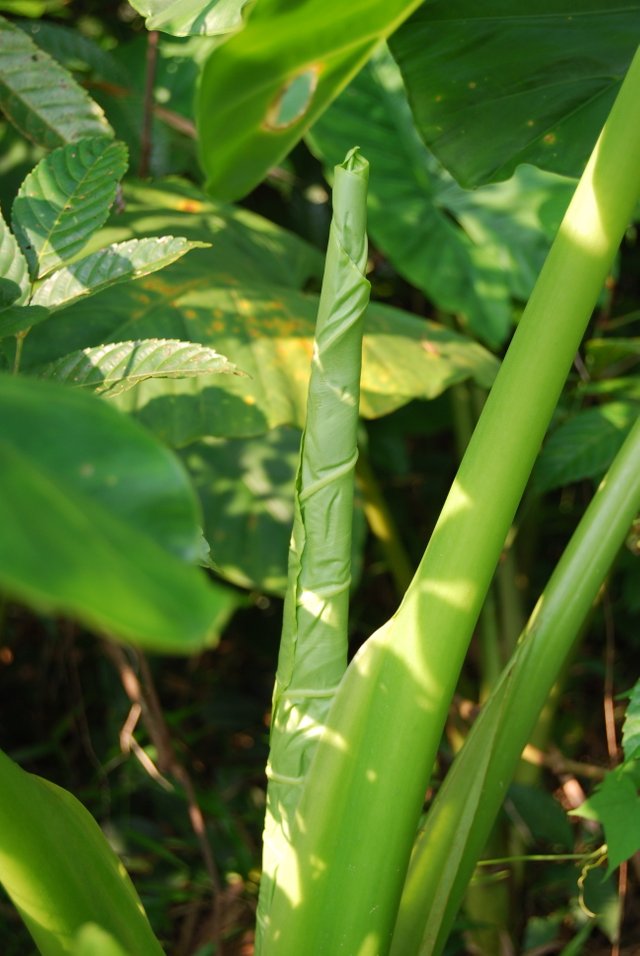If it rains, you can cover the head with taro leaves

Colocasia esculenta, or in Aceh, we call it "Bak Leubu" (English: taro; Malay: talas). The leaves of this plant is shaped like a large shield or heart, oval and tapered ends of the leaves.
Because of width, the leaves can be used to protect the head when it rains.
Surface of the leaves are covered with tiny hairs that make watertight because the water will flow directly to leave surface of the leaf. The leaf can also be used as a wrapper, eg wet fish, in the traditional market.
Taro leaves are included in a single leaf, which has leaves with amounts ranging from 2 to 5 strands. Taro leaves have stalks that length, and soft and have many air voids that can make taro plants adapted to the environmental conditions that were flooded. Stalk on taro leaves are green with a line.
Plants have planted behind the house because the stem and tuber can be cooked into the food, but the images of taro, I take in the bush. The stem is fairly high, and its leaves are very width, so as to attract attention.
Taro is often dubbed the potato of the tropics because it is a source of carbohydrates other than rice.
Originating in the South India and Southeast Asia, then spread to the islands of Pafisik, Egypt, the Mediterranean, Africa, to America. In other areas, taro has a common designation kalo (Hawaii), mukhi (Bangladesh), Toran (Korea), Kolkas (Egypt), satoimo (Japan) and others.



get that photo, pat nyan
lam uteun, likoet rumoh gop... haha 😜
bereh that, ube jie on lubue jhi
This post has been linked to from another place on Steem.
Learn more about and upvote to support linkback bot v0.5. Flag this comment if you don't want the bot to continue posting linkbacks for your posts.
Built by @ontofractal